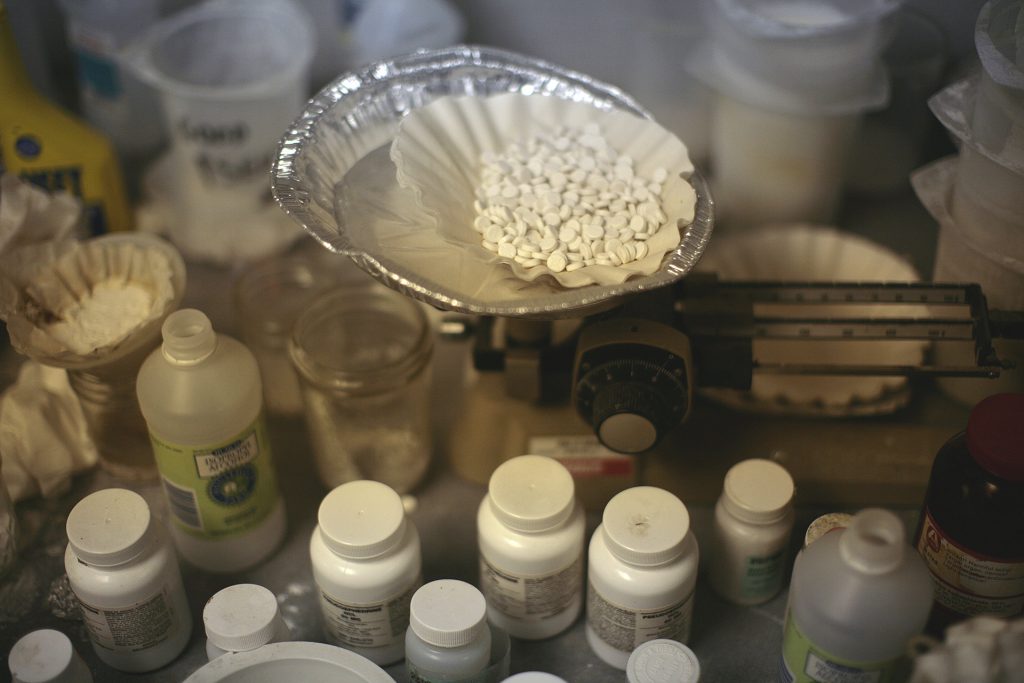Opioid overdose deaths have quadrupled since 1999, according to the Centers for Disease Control & Prevention. While opioid abuse receives much-needed attention from state and federal officials, other substances are making a resurgence. Meth is among the most prominent of these substances — and the most dangerous.
America’s meth problem is longstanding, but many policymakers believed it to be under control after a series of legislative crackdowns on the selling of pharmaceuticals related to meth production. Indeed, these crackdowns have greatly reduced domestic meth production, some states seeing as much as a 90 percent drop in the number of meth lab busts a year. Despite this progress, the price of meth is actually dropping, and the purity is higher than ever. Between 2010 and 2015, meth-related deaths have grown by 30 percent, and use has risen from 3 to 4 percent of the U.S. population. Domestic production is largely gone, but domestic demand was never addressed. Other sellers have entered the market to fill the gap.
Most meth in the U.S. is now created internationally and smuggled into the country through the U.S. southern border. This stream of methamphetamine hits rural counties in the Midwest and Southern U.S. the hardest. To see this, one needn’t look further than Iowa. In 2012, Iowa recorded fewer than 50,000 methamphetamine seizures. As of December 2017, the number has more than doubled to 106,660.
Meth is a different, and perhaps more difficult, problem to address than opioid abuse. Meth doesn’t kill like opioids do, making it feel less urgent an issue. Methamphetamines are harder to overdose on, instead rotting out the insides of its users while they withdraw from the workforce, their communities, and in many cases, their families. According to NBC News, Chippewa County, a rural county in east Wisconsin, saw the number of displaced children because of meth addiction grow from 28 in 2013 to 103 in the first half of 2017. A large influx of displaced children is expensive to handle, difficult to manage, and potentially devastating to the futures of the displaced children, who have lost their parents, their homes, and any sense of security. Rural communities lack the resources to care for and house these children, let alone treat and rehabilitate the parents who have lost them.
RELATED: Heroin, meth trending up
Many communities are being overwhelmed by abundant, cheap, and deadly methamphetamines. Unlike opioid addiction, no medication has been developed to assist in the rehabilitation of meth users. Under the Affordable Care Act, insurance companies must include addiction treatment in any plans they sell. This is an immense step forward in making treatment affordable and accessible, but many meth users are eligible for Medicaid, an insurance program that the Republican Party seeks to ax at the federal level. Any cuts to Medicaid will greatly reduce the ability of rural communities to fight the meth epidemic, or the opioid epidemic, or any public-health crisis.
While the path toward rehabilitation is not straightforward, the path toward relapse and increased meth use is lucid; cutting social benefits will reduce the number of people treated for addiction. Imprisoning drug addicts, rather than rehabilitating them, is expensive and inhumane. A drug addiction is not something that can be easily overcome; removing persons who have become addicted to meth is economically ineffective and morally deficient.
Without comprehensive rehabilitation programs made available to low-income, rural counties in the U.S., the meth epidemic will continue to grow. More rural communities will be devastated, and the death count will rise. Expected cuts in Medicaid and Medicare (to pay for corporate tax cuts) by the Senate and House GOP will exacerbate the problems. A fight for the future of public health will develop over the next few months. For Iowa’s sake, I hope public health becomes a priority.



